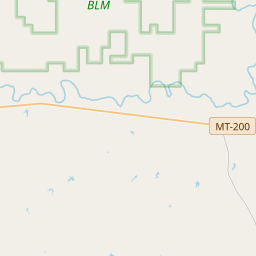Join the Voyage of Discovery
Historical marker location:
Brockway, Montana
( Marker can be reached from the intersection of State Highway 200 at milepost 248 and South Flowing Wells Road, on the left when traveling west.)







© OpenStreetMap contributors
Loading...
Searching for other points of interest within 3 miles of this location.The Great Northern Railway, which connected St. Paul, Minnesota, to Seattle, Washington, passed through Montana and played a major role in the development of the state's economy. The railway brought settlers and goods to Montana and facilitated the transportation of copper, wheat, and other commodities to markets around the country.
About McCone County
McCone County Timeline
McCone County, Montana, is located in the northeastern part of the state and was established in 1919. It was named after State Senator George McCone, who played a key role in the county's formation. Prior to its establishment, the area was inhabited by several Native American tribes, including the Sioux, Assiniboine, and Gros Ventre.
The early settlers in McCone County were predominantly ranchers, drawn to the area by the vast grasslands and fertile soil. The Yellowstone River, which flows through the county, provided a vital water source for these settlers and supported their agricultural activities. In the late 19th century, the construction of railroads further facilitated the growth and development of the county, allowing for easier transportation of goods and opening up new market opportunities.
During the early 20th century, the discovery of oil in the region had a significant impact on McCone County's economy. The oil industry attracted workers and businesses, leading to a population boom in the county. However, fluctuations in oil prices and production levels throughout the years have caused both periods of prosperity and economic downturns for McCone County.
Today, McCone County remains primarily rural, with agriculture and energy extraction as its main industries. Cattle ranching and farming are vital to the local economy, and the county is also home to coal mines and natural gas wells. The county's beautiful landscapes, including the expansive prairies and the picturesque Fort Peck Reservoir, continue to attract tourists and outdoor enthusiasts. As a close-knit community, McCone County holds various events and festivals throughout the year to celebrate its rich history and culture.
The early settlers in McCone County were predominantly ranchers, drawn to the area by the vast grasslands and fertile soil. The Yellowstone River, which flows through the county, provided a vital water source for these settlers and supported their agricultural activities. In the late 19th century, the construction of railroads further facilitated the growth and development of the county, allowing for easier transportation of goods and opening up new market opportunities.
During the early 20th century, the discovery of oil in the region had a significant impact on McCone County's economy. The oil industry attracted workers and businesses, leading to a population boom in the county. However, fluctuations in oil prices and production levels throughout the years have caused both periods of prosperity and economic downturns for McCone County.
Today, McCone County remains primarily rural, with agriculture and energy extraction as its main industries. Cattle ranching and farming are vital to the local economy, and the county is also home to coal mines and natural gas wells. The county's beautiful landscapes, including the expansive prairies and the picturesque Fort Peck Reservoir, continue to attract tourists and outdoor enthusiasts. As a close-knit community, McCone County holds various events and festivals throughout the year to celebrate its rich history and culture.
McCone County Timeline
This timeline provides a glimpse into the major events and milestones that have shaped the history of McCone County, Montana.
- 1914 - McCone County is established on February 26.
- 1915 - The town of Circle is founded as the county seat.
- 1920 - The population of McCone County reaches over 4,000 residents.
- 1929 - The Great Depression begins, leading to economic challenges in the county.
- 1930 - The population decreases to around 3,500 due to the hardships of the Great Depression.
- 1951 - The Charles M. Russell National Wildlife Refuge is established in McCone County.
- 1970 - The population declines to around 2,000 as agriculture becomes more mechanized.
- 1984 - The Fort Peck Reservoir becomes a popular recreation spot in the county.
- 1993 - The population stabilizes at around 1,800 residents.